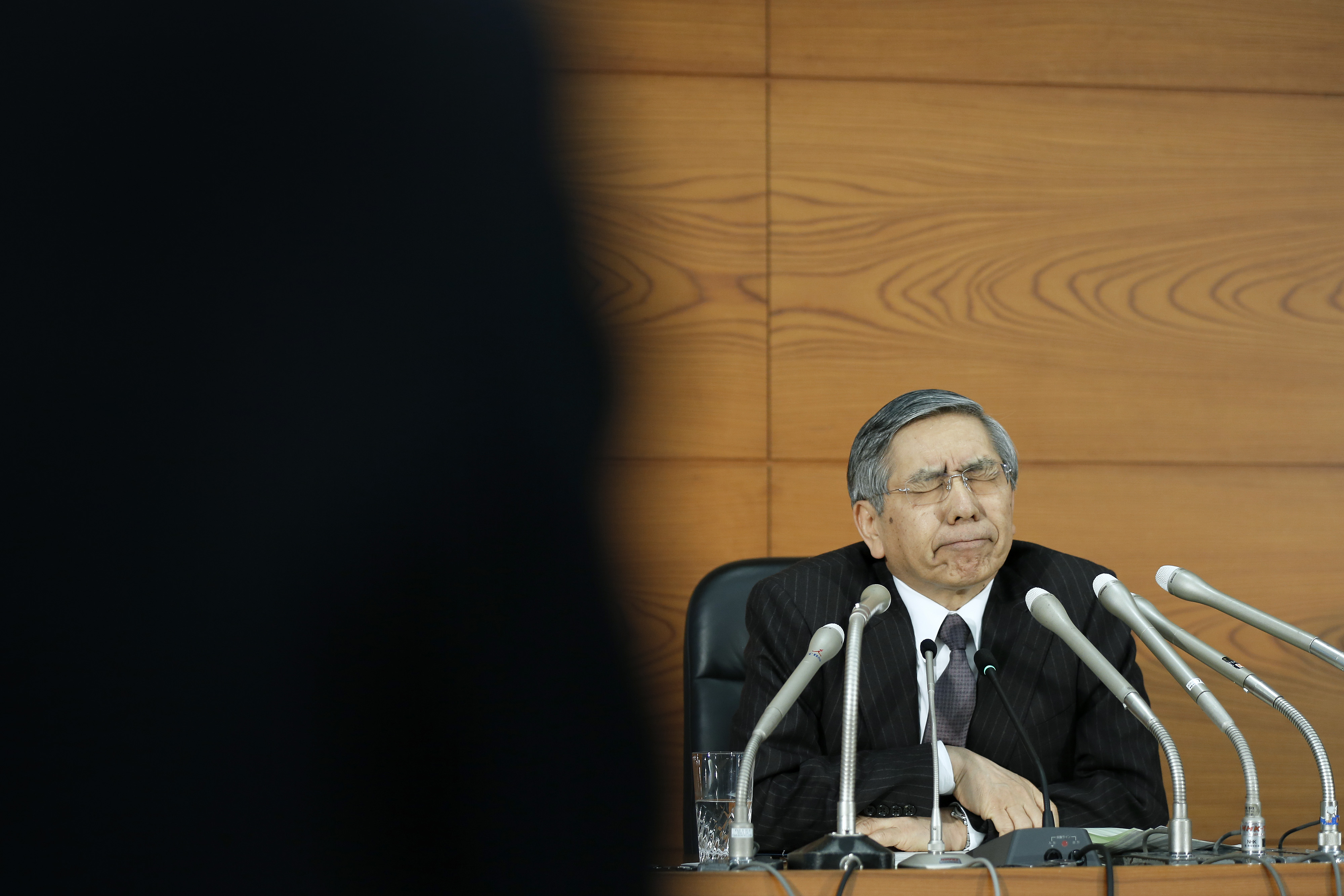Investors who predict the European Central Bank will start buying government bonds this week to fight deflation shouldn't expect too much if Japan is any guide.
The Bank of Japan's experience is a real-life example of the Keynesian economic theory of a liquidity trap, in which money printed by a central bank is hoarded in anticipation of further deflation rather than invested. Japan's 10-year yield dropped to a record 0.225 percent last week and similar maturity inflation-linked debt signals consumer price increases of 0.74 percent, failing to meet the BOJ's 2 percent target.
Japan and Europe are expanding quantitative easing at a time when the Federal Reserve is winding up its program, causing turbulence in the financial markets. The yen has plunged almost 30 percent against the dollar in the past two years, making Japan's government debt the world's worst performers in U.S. currency terms. The euro slumped 12 percent in 2014 amid concern ECB President Mario Draghi's easing will be as ineffective as that of BOJ Gov. Haruhiko Kuroda.



















With your current subscription plan you can comment on stories. However, before writing your first comment, please create a display name in the Profile section of your subscriber account page.